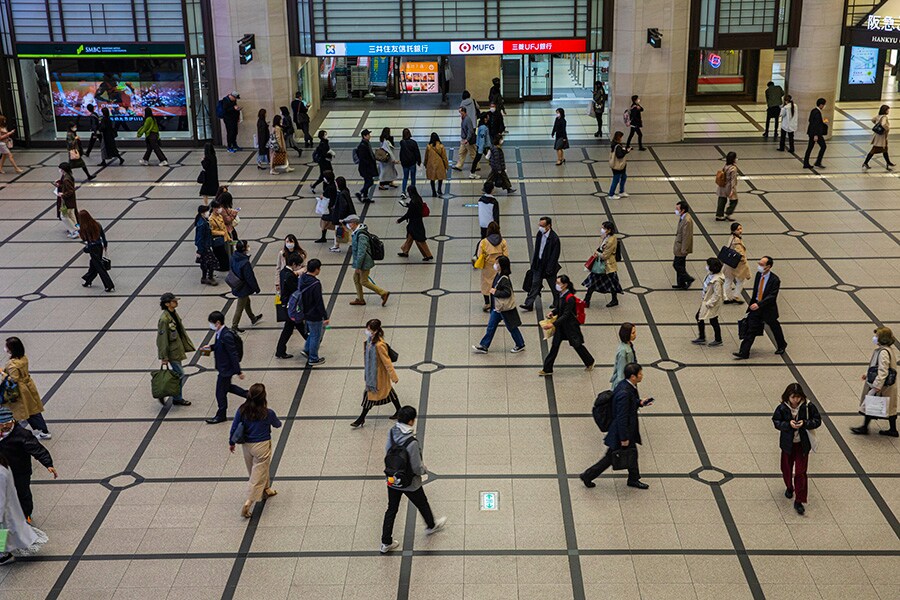
Japan's economy contracts 7.8 percent, worst on record
The quarterly slide, an annualized drop of 27.8 percent, coincides with a long and uncertain road to recovery
 A train station in Osaka, Japan, March 25, 2020. Japan’s economy shrank by 7.8 percent in the second quarter of the year, posting its worst performance on record as the coronavirus pandemic ground economic activity to a near halt in April and May. (Hiroko Masuike/The New York Times)
A train station in Osaka, Japan, March 25, 2020. Japan’s economy shrank by 7.8 percent in the second quarter of the year, posting its worst performance on record as the coronavirus pandemic ground economic activity to a near halt in April and May. (Hiroko Masuike/The New York Times)
TOKYO — Japan’s economy shrank by 7.8% in the second quarter of the year, posting its worst performance on record as the coronavirus pandemic ground economic activity to a near halt in April and May.
The nose-dive in output in the three-month period — an annualized drop of 27.8% — was the third straight quarter of contraction for Japan, the world’s third-largest economy after the United States and China. It came on top of a 0.6% decline in the first quarter of 2020, or an annualized decrease of 2.2%, the country’s government said Monday.
Already weakened by a tax increase, slowing demand from China and a series of natural disasters last fall, Japan’s economy became the first among major nations to officially fall into recession when the pandemic hit, causing exports to plunge and effectively obliterating the country’s tourism sector.
“The pandemic’s total impact on the economy up to this point is almost the same as the 2008 financial crisis,” said Michinori Naruse, an economist at the Japan Research Institute.
But with the financial crisis, “things got worse slowly,” he said. “This time, they got bad all at once.”
©2019 New York Times News Service




